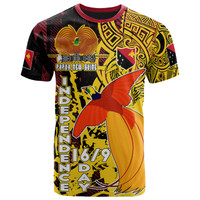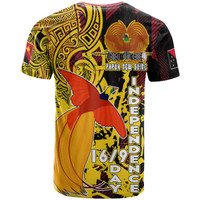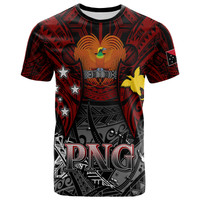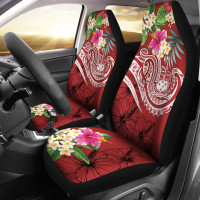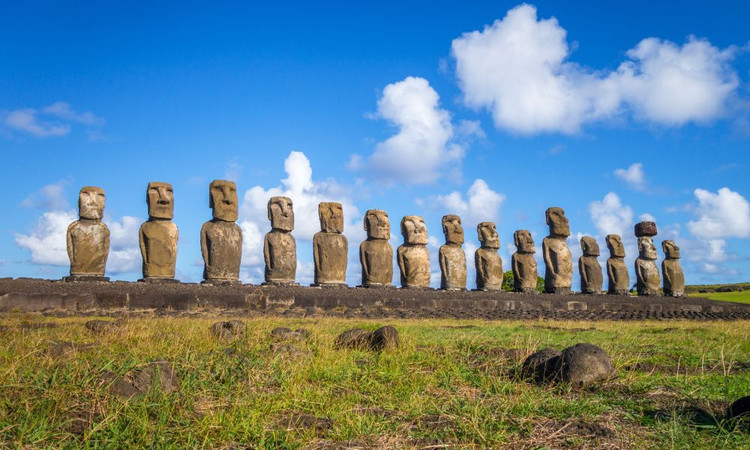How the Moai of Easter Island Were Made and Moved
Posted by Maris on 19th Mar 2024
Easter Island, sometimes called Rapa Nui, is a volcanic island in the southeast Pacific Ocean that is well-known for its enormous, intricately carved stone statues, or moai. A big yellow body, a red hat or topknot (referred to as a pukao), and white inset eyes with a coral iris make up a finished moai.
These sculptures, most of which are between 6 and 33 feet tall and several tons in weight, are said to have been made in the shape of humanoid faces and torsos in approximately 1,000 pieces. It is believed that the moai's carvings started around 1200, just after people first came on the island, and finished around 1650. See what science has discovered about the construction of the Easter Island moai and the techniques utilized to transport them into position.
The Primary Quarry, Rano Raraku
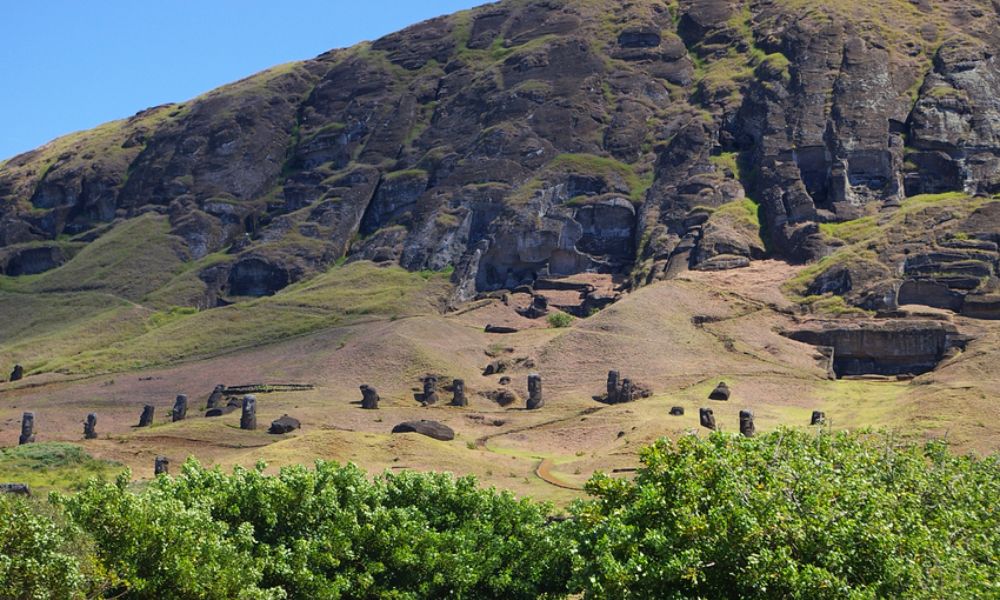
The volcanic tuff from the Rano Raraku quarry—the remnants of an extinct volcano—was used to construct the primary bodies of the majority of the moai statues on Easter Island. The Rano Raraku tuff is a sedimentary rock that is relatively easy to carve but very heavy to move. It is composed of layers of air-lain, partially fused and partially cemented volcanic ash. At Rano Raraku, there are around 300 incomplete moai, the biggest of which is more than 60 feet tall.
The moai were not carved out of a large open area like a contemporary quarry, but rather from small bays of rock. Most of them seem to have been carved while lying on their backs. When the carving was finished, the moai's backs were treated, and they were lifted off the rock and raised vertically. The moai were then relocated by the Easter Islanders, who occasionally placed them on platforms in groupings.
Moai Headgear
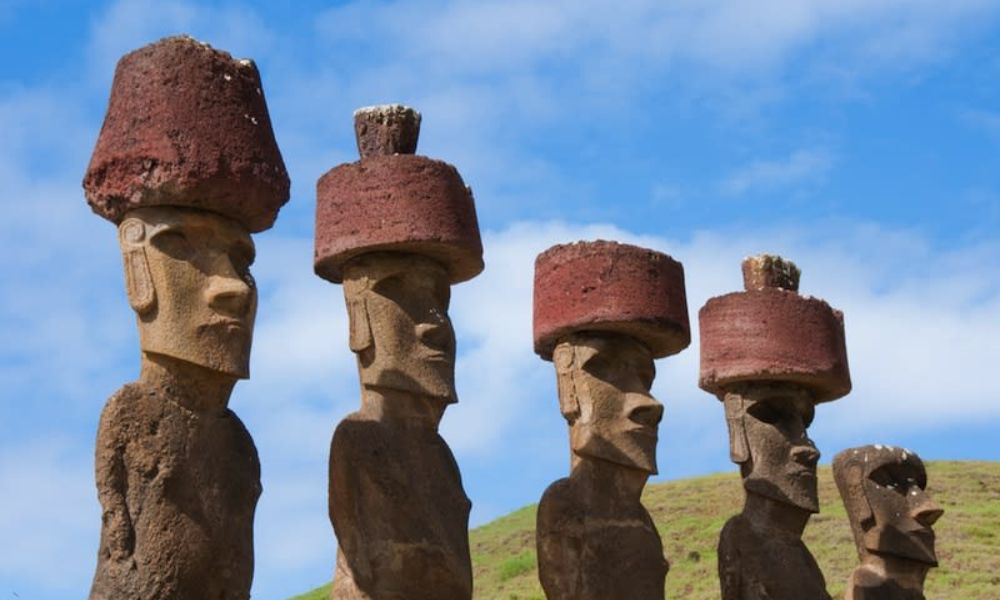
Easter Island's moai wear pukao in large numbers. Usually, they are huge, squat cylinders that measure up to 8.2 feet overall. The Puna Pau cinder cone served as a second quarry for the raw materials used to make the red hats. In the Puna Pau quarry or on top of or close to moai, more than 100 have been discovered. The basic material is red scoria that was created by an old volcanic eruption that occurred long before the first inhabitants arrived. The pukao comes in a variety of colors, from rich plum to almost blood crimson. On occasion, the platforms' facing stones were also made of crimson scoria.

Statue Road Network
According to research, about 500 Easter Island moai were transported from the Rano Raraku quarry to prepared platforms (referred to as ahu) spread out across the island via a system of highways. The biggest of the relocated moai, standing over 33 feet tall and weighing over 81.5 tons, was transported more than 3 miles from its original location at Rano Raraku.
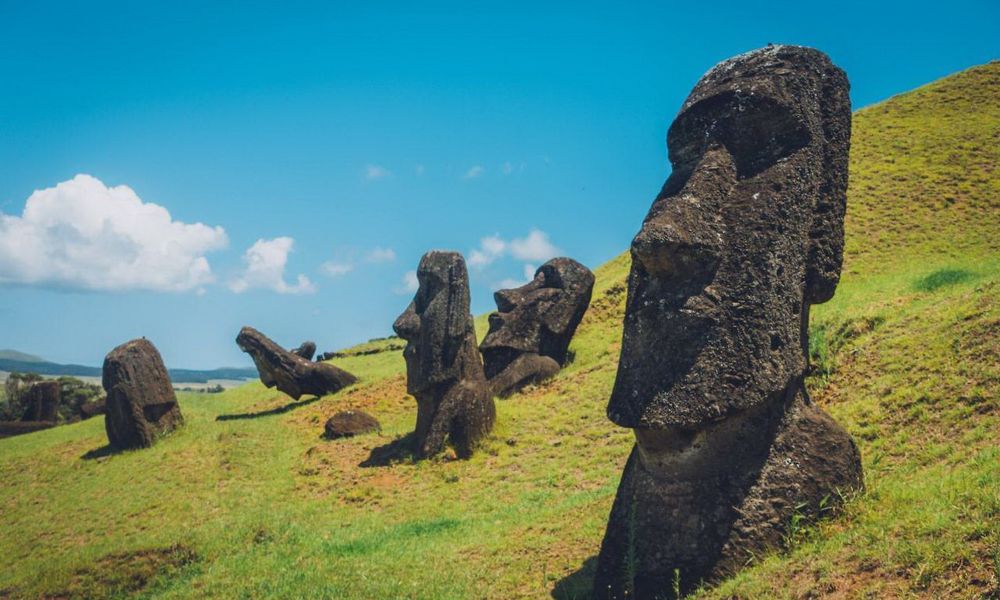
While no one initially believed her, scholar Katherine Routledge initially recognized the road network the moai moved along in the early 20th century. It is made up of a network of pathways that branches off of Rano Raraku and is around 15 feet wide. There are still about 15.5 miles of these roads that can be seen in satellite photos and the terrain; many of them are used as routes by visitors to the sculptures. Road gradients range from an average of 2.8 degrees to 16 degrees in certain places.
The road's original floor plan was concave or U-shaped, and curbstones bordered at least some of the route. A few ancient academics contended that the roughly sixty moai discovered beside the highways today had fallen during transportation. On the other hand, some contend that the moai were purposefully placed by the road due to weathering patterns and the existence of incomplete platforms. Maybe they represented a roadside pilgrimage to see ancestors, similar to how tourists travel back in time nowadays.
Decorating the Moai

The fact that some of the Easter Island moai were embellished with intricate carvings—possibly many more than we now know about—is perhaps the least well-known feature of them. Similar petroglyphs have been identified from engravings in the volcanic bedrock surrounding Rapa Nui; however, the sculptures' surfaces have deteriorated and may have even destroyed several engravings due to exposure to the volcanic tuff.
The sculpture's back and shoulders have intricate carvings that can be seen thanks to photogrammetry modeling of one example housed at the British Museum. This example was carved out of hard grey flow lava rather than soft volcanic tuff.
How to Move a Moai
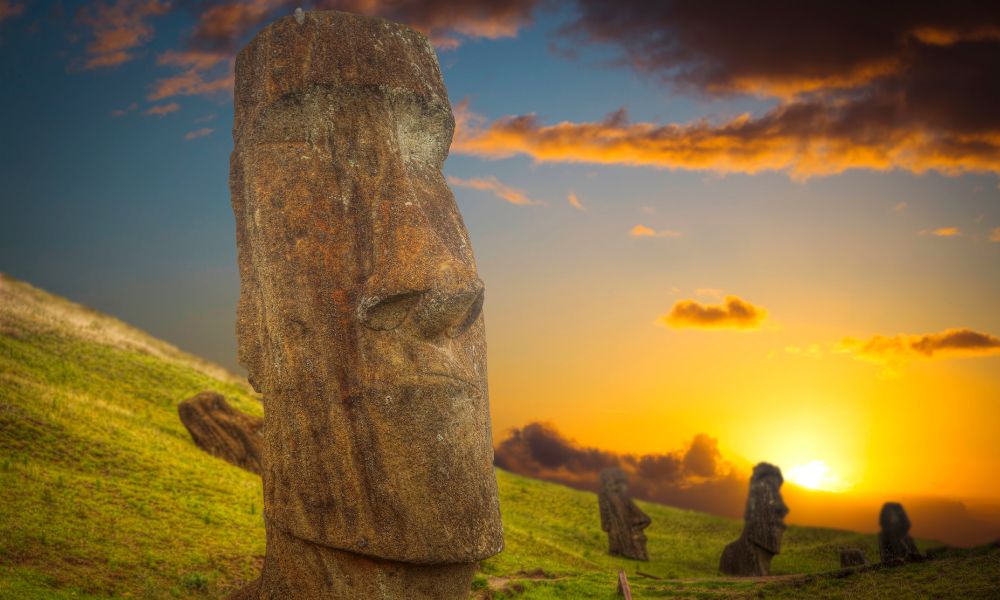
The islanders carried out a genuinely enormous task between 1200 and 1550, moving roughly 500 moai over lengths of up to 11 miles out of the Rano Raraku quarry. Over the course of decades-long studies on Easter Island, a number of experts have addressed theories regarding the relocation of the moai.
Since the 1950s, numerous attempts have been made to move moai replicas using techniques such as dragging them around on wooden sleds. A number of academics have refuted the assumption that employing palm trees for this method resulted in the island being deforested.
In 2013, the latest and most successful attempt to move the moai was carried out by a group of archaeologists who used ropes to move a duplicate statue that was standing straight down the road. This approach is consistent with the oral traditions of Rapa Nui, where stories suggest the moai emerged from the quarry.
Crafting a Group
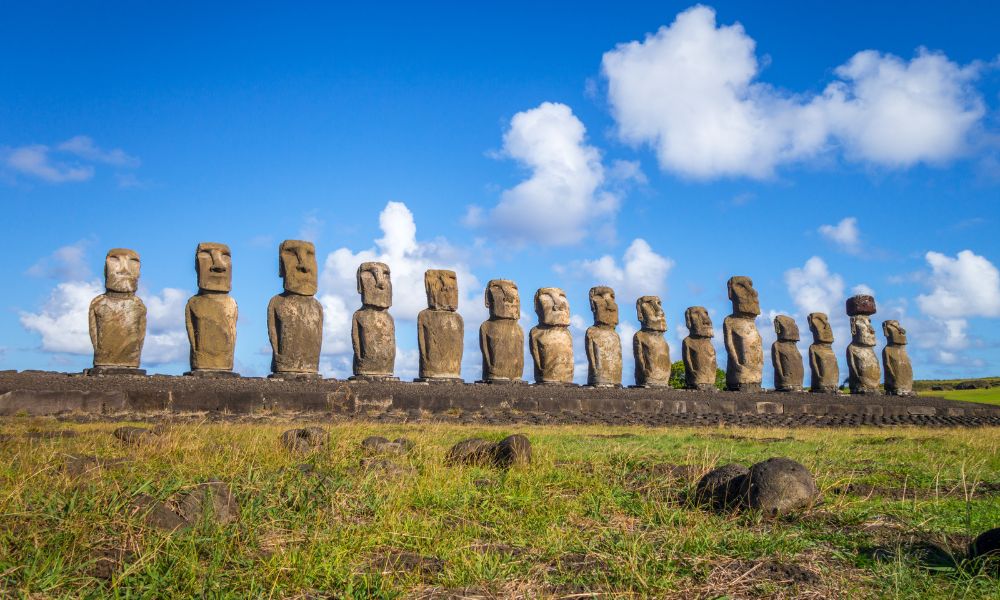
The Easter Island moai were occasionally positioned in groups on ahu platforms that were laboriously built from dressed flow lava stone walls and tiny, water-rolled beach stones known as poro. There are walkways and ramps in front of a few of the platforms. These may have been constructed to make it easier to position the sculptures and veneered after they were in position.
Only found on beaches, poro were primarily used as pavement for boat-shaped buildings or sea slipways, aside from the statues. It's probable that the islanders placed a high value on the moai's cultural importance because it was built utilizing both inland and beach resources.
See and Be Seen
The fact that every single moai monument faces inward and away from the sea suggests that the Rapa Nui people placed a high value on this feature. These days, the moai's shell and coral eyes are a rare sight on the island because so many of them have been removed or fallen out. The irises are inlaid with coral, while the whites of the eyes are fragments of seashell. It was not until the moai were positioned on the platforms that the eye sockets were cut and filled.



